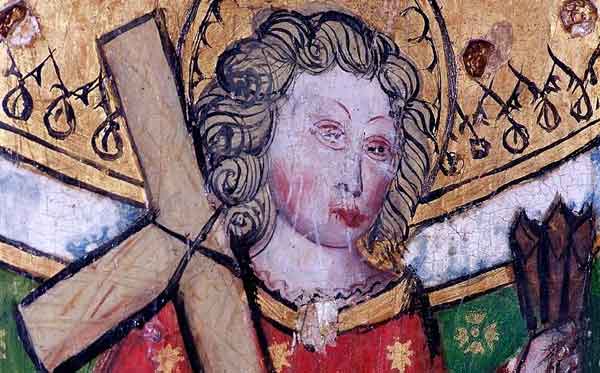
Ahead of her free public lecture on May 29, Alice Bennett of York’s Centre for Lifelong Learning considers how murky stories of murder were used to blacken a religion’s reputation in the Middle Ages
Medieval Western Europe’s relationship with Judaism was marked by popular prejudice, fear and violence. The first official Jewish settlements in England were Jews from Rouen who accompanied the Conquest, with further settlement encouraged by William Rufus.
This royal link was maintained and Jews remained under the protection of the crown in return for paying higher taxes and acting as royal bankers. Jews were barred entry to many professions and therefore often worked as moneylenders, an occupation prohibited to Christians who were forbidden to practice usury. Christians who charged interest were forbidden Christian burial by the Third Lateran council in 1179.
However, such financial services were essential to fund major projects, including the crusades, as well as for growth of trade. Subsequently the settlement of Jews was supported by the state, which required their financial services.
The legal status of Jews as under royal protection, whilst of little real practical use, distinguished them from the general populace. This fostered dislike, by suggesting (falsely) preferential treatment. Although Jewries were established in the major commercial centres of medieval England, most notably in York, Lincoln, Norwich and London, Jewish settlement within Britain was never that extensive and was primarily urban. The first records of Jewish settlement in York are from 1130.
It is from around this time that the first blood libel narratives about Jewish communities in Western Europe appear. Blood libel is the systematic accusation of religious group (usually made against minority Jewish communities) of ritual murder. These stories initially centre around actual deaths, but often circulate long after any incident and appear in mutated forms.
The accusations usually place the murder in a religious context, the killers either persecuting one not of their faith or killing for religious reason – offering a sacrifice or to obtain blood or organs supposedly needed for rituals. There are sometimes accompanying accusations of cannibalism. In some cases the victim becomes venerated as a martyr, even as a saint. In instances of blood libel, a violent response against the accused community is common.
There are instances of these from across Europe, with several examples from England. The first of the blood libel narratives dates from 1144 and is one of the best known – that of St William of Norwich. William’s life, supposed murder and the subsequent miracles at his shrine are described at length by Thomas of Monmouth in his Life of St William of Norwich. Monmouth presents William’s death as both sadistic child murder and a calculated assault on Christianity.
The blood libel narratives, and the treatment of medieval Jews more broadly, cast long shadows
Whilst William remained the most famous of the supposed victims of Jewish ritual murders, he also importantly establishes a precedent for such accusations to be made against Jewry. The story of his death provides a model for the following centuries and similar accusations occurred in other towns with notable Jewish communities. The other well known child martyr of this type in England is Little St Hugh, a boy supposedly murdered by Jews in Lincoln in 1255. This legendary murder was commemorated in Anglo-Norman verse and English ballads, versions surviving into the nineteenth century.
These two cases typify the medieval blood libel narrative – in both the victim is a young boy, presented as an innocent child and devout Christian. These boys are killed in ways designed to mock and degrade Christianity, rendering the events heretical as well as murderous. The Jewish murderers are all adult males and are deliberately depicted as calculating and sadistic.
These narratives were constructed to slur the reputation of Jewish communities as much as possible, accusing them not only of murder but of aberrant killing, gratuitous infliction of pain and the deliberate attack on the faith of others. As anti-Semitic propaganda this proved effective – these narratives were repeated and circulated widely, reinforcing popular prejudices and fuelling violence.
Under Edward I, the Jewish population was officially expelled from England in 1290. Edward confiscated any assets and decreed none of the population of around 3,000 could remain in the kingdom unless they converted. The expulsion did not end anti-Semitic narratives but the absence of Anglo-Jewry forced a change of location for narratives supposedly describing contemporary incidents.
This relocated, demonised Jew survived as a spectre not only in the late medieval English mind but also the Renaissance imagination. The blood libel narratives, and the treatment of medieval Jews more broadly, cast long shadows. The professional restrictions which forced many medieval Jewish communities into money lending came to provide the basis for 19th century anti-Semitic prejudices about Jewish financial greed – prejudices which in turn fed the ideology of Nazism.
This legacy reflects the importance of these narratives. Whilst blood libel represents a chapter in European history that many would wish to forget, these texts expose the roots of later prejudices, many of which sadly endure to this day. By studying these early instances, we can better understand the rifts and fears in medieval society, but also in that of today.
- Alice Bennett’s free lecture Medieval Murders: Blood Libel Narratives of the Middle Ages takes place on Wednesday, May 29, 2013, 6.30-7.30pm
- It is one of a number of free public lectures offered by the Centre for Lifelong Learning at the University of York each term.
- This is part of the wider university offering, details of which can be found here
- The Centre for Lifelong Learning offers a wide variety of learning opportunities to the general public on behalf of the University of York. Find out more on their website, or email the centre to be added to the mailing list. For those with Twitter leanings, follow @UniOfYork_CLL to be kept up-to-date
